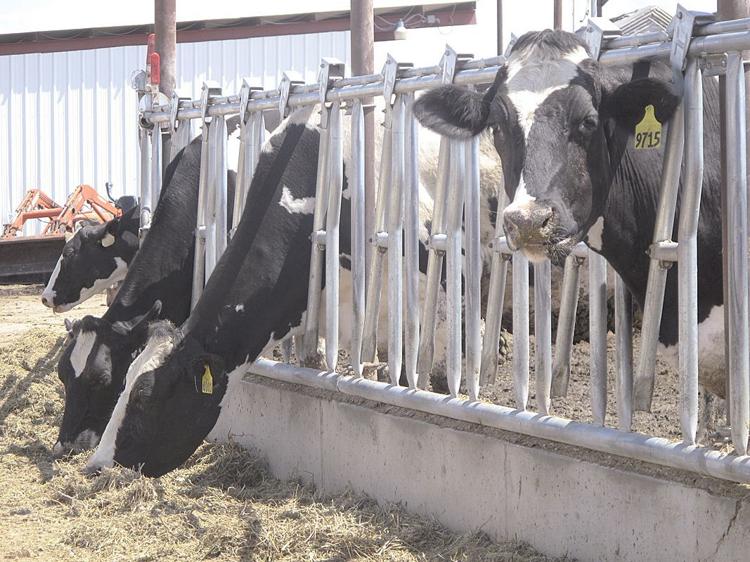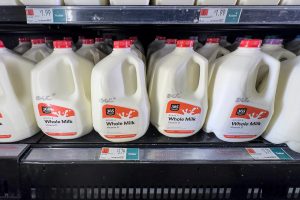
The growth was driven primarily by a resurgence in nonfat dry milk/skim milk powder to Mexico and Southeast Asia and whey demand in China, according to the U.S. Dairy Export Council.
U.S. suppliers shipped 178,090 metric tons of dairy products on a milk-solids equivalent in February valued at $565.5 million.
Analysts with the export council were surprised by the increase in powder exports, expecting shipping delays would continue to harm exports. But powder shipments grew substantially in February, up 31.4% year over year to 71,548 metric tons — with a 38% increase to Southeast Asia and a 30% increase to Mexico.
February’s robust exports, anecdotal reports that product in inventory is sold and the gain in last week’s Global Dairy Trade suggest strong international demand for skim milk powder, the analysts said.
“Looking ahead, this suggests that if U.S. exporters can secure booking with a carrier, there will be opportunities to grow exports,” they said.
Whey exports are another bright spot. They climbed 29% in February year over year to 51,243 metric tons — with a 159% increase to China.
“Overall, both increased domestic demand for dairy products raising domestic milk prices and ongoing efforts to rebuild the swine herd has led China to dramatically increase whey exports,” the analysts said.
“The U.S. continues to be a key beneficiary of this demand despite the supply-chain constraints in moving product off the West Coast,” they said.
While cheese exports are lagging 2020 levels, there is some optimism in the February numbers. U.S. cheese exports were the highest in seven months.
Big gains were made in the Middle East/North Africa, Japan, China and South Korea, helping to mitigate an 11% decline to top U.S. market Mexico.
More competitive U.S. cheese pricing since December and progress in keeping COVID-19 in check in some key markets are creating a more optimistic outlook for U.S. cheese exports, the analysts said.
“But U.S. shipping issues and continued COVID-19 uncertainty remain strong headwinds to a full cheese rebound,” they said.
As for exports to Mexico, February marked the sixth consecutive month of year-over-year decreases in U.S. cheese exports, but it was the largest export volume since August 2020.
The lower exports to Mexico are primarily a result of weak demand caused by the COVID-19 pandemic, said William Loux, the council’s director of global trade analysis.
“Mexico’s economy was in a recession entering 2020, and the COVID-19 pandemic only exacerbated the economic situation,” he said.
According to Mexico’s National Institute of Statistics, Geography and Informatics, the economically active population in Mexico dropped by 10 million in the second quarter of 2020, he said.
“Thankfully, employment improved throughout the year, but the employment rate and economically active population still lags pre-pandemic levels. That’s weighing on dairy demand, particularly for cheese,” he said.
With accelerated vaccine distribution in Mexico, tourism returning and other sectors of the economy projected to partially recover in 2021, there are reasons to expect demand to grow this year, he said.
“Still, with the usual 2% growth in (Mexico’s) domestic milk production expected, the potential emergence of non-tariff barriers and an unknown timeline for a majority-vaccinated population, we are not expecting a full return to pre-pandemic import levels until 2022,” he said.
U.S. dairy exports January through February 2021
Product 2020 2021 percent change
Metric Tons
NDM/SMP 124,014 134,452 8.4
Dry whey products 80,924 98,591 21.8
Cheese 58,907 55,408 -5.9
Lactose 64,814 51,206 -21.0
WMP 5,602 5,897 5.3
Butterfat 3,569 7,065 98.0
MPC 7,028 5,794 -17.6
Infant formula 5,449 4,226 -22.4
Evap/Cond Milk 2,082 1,660 -20.3
Casein 556 406 -27.0
Milk/cream (liters) 18,026 21,956 21.8
Total volume* (metric tons) 325,308 338,977 4.2
Total value (million dollars) 1,083.8 1,071.0 -1.2
*milk solids equivalent
Source: U.S. Dairy Export Council

























